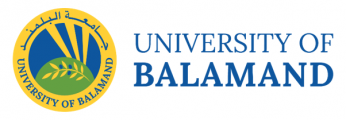 PhD Position – Numerical and experimental modeling of heat and humidity transfers within bio-sourced materials: Application to evaluating the energy and environmental performance of buildings with green roofs
PhD Position – Numerical and experimental modeling of heat and humidity transfers within bio-sourced materials: Application to evaluating the energy and environmental performance of buildings with green roofs
|
Important Information |
|
| Title |
Numerical and experimental modeling of heat and humidity transfers within bio-sourced materials: Application to evaluating the energy and environmental performance of buildings with green roofs. |
| Workplace(s) |
University of Balamand (UOB) - Lebanon University of La Rochelle (ULR) - France |
| Supervisors |
Dr. Makram El Bachawati - UOB Prof. Rafik Belrabi - ULR |
| Application Deadline |
October 16, 2022. |
| Pitch Presentation |
Ocotober 19-21, 2022. |
| Starting Date |
November 01, 2022. |
Description of the subject |
|
The research theme of heat and humidity transfers respond to major societal concerns related to improving building occupants’ living environment through energy-efficient solutions with a low environmental footprint. Indeed, the current thermal regulations recommend designing buildings that are more and more thermally insulated with a very low envelope permeability. Admittedly, this makes it possible to reduce the energy and environmental impacts but brings up new challenges because it risks altering summer comfort and the quality of indoor air. Another consequence is seeing these “hermetic” buildings deteriorate due to humidity in habitable environments. Thus, water (in vapor and liquid phases) is responsible for fungal growth and degradation of plant-based insulations. In addition, it constitutes the transport vector for aggressive agents such as chlorides and sulfates and the seat of chemical reactions such as carbonation. Moreover, second-order phenomena hitherto neglected have become increasingly important to the point where they strongly contribute to the overall heat balance of buildings and, therefore, cannot be ignored. Mass transfers (particularly humidity) are the main ones. In addition, the use of materials with low environmental impacts, such as eco-materials, bio-sourced materials, and recycled materials, remains limited. This is due to the lack of databases defining their intrinsic properties and the lack of guaranteeing their properties’ evaluation with time. This doctoral research will study mass transfers, mainly humidity, air, and heat, at different scales: microstructural, porous materials, and envelopes constituting buildings’ vegetated walls (facades and roofs). They will be based on the work developed at LaSIE by [Belarbi et al., 2006], [Qin, 2007], [Belarbi et al., 2008], [Trabelsi, 2010], [Abahri, 2012], [Issaadi, 2015 ], [Ferroukhi, 2015], [Bachawati, 2016], [Bennai, 2017], [Yousri, 2018], [Koura, 2018], [Maaroufi, 2019], [Benmahiddine, 2020], [Boukhelf, 2020]. This thesis work aims to better control the behavior of innovative materials according to their ages through a multi-scale approach (from the microstructural scale to the scale of the building envelope). It will promote the use of innovative materials (eco-materials, bio-sourced materials, and recycled materials) in the construction and rehabilitation of buildings. This doctoral thesis work will be structured around five complementary parts:
Keywords: Green Roofs; Sustainability; Bio-sourced materials; Recycled materials; Ecofriendly; Circular economy. |
List of References
|
Profile of the candidate |
|
Modality of the application |
1. Create a student account. Click here. Candidates are invited to download the SWaTH Mobile App and Log In to check the updated status of their application. Candidates who pass Stage 2 will be invited for an online presentation between 19 and 21 October 2022. The Ph.D. thesis will start on November 01, 2022, and 3-month mobilities will take place twice a year for a period of 3 years. |
